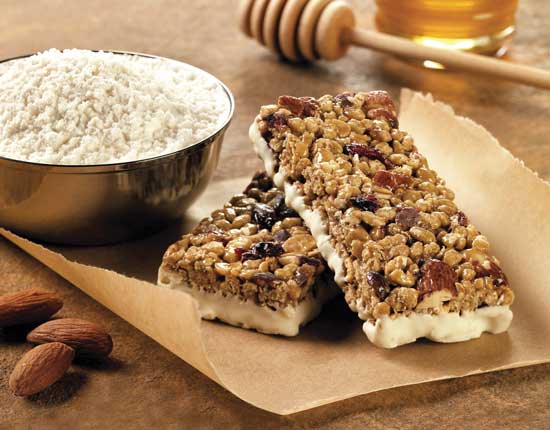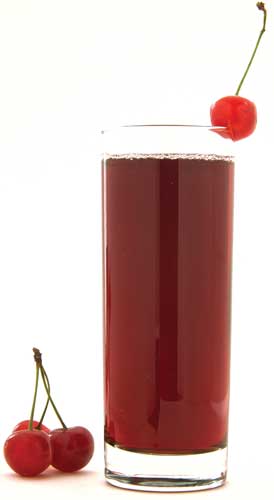Ingredients That Boost Men’s Health
NUTRACEUTICALS
 Men’s Health Month was this past June and was recognized with screenings, health fairs, and other health education activities. The goal was to heighten awareness of preventable health problems and encourage early detection and treatment of diseases among men and boys.
Men’s Health Month was this past June and was recognized with screenings, health fairs, and other health education activities. The goal was to heighten awareness of preventable health problems and encourage early detection and treatment of diseases among men and boys.
The top causes of death among adult men in the United States are heart disease, stroke, cancer, and chronic lower respiratory disease, according to the Mayo Clinic and the Centers for Disease Control (CDC). In addition, men die at higher rates than women from the top 10 causes of death. According to the CDC, in 1920, women lived, on average, one year longer than men. Now men, on average, die almost five years earlier than women.
Some of today’s health concerns for males include heart health and prostate cancer as well as body composition and recovery in the sports nutrition area. Some of the ingredients that can play a role in men’s nutrition include omega-3 fatty acids, lycopene, and lean protein. Here’s a look at some of the health concerns that men have and the nutrients that may play beneficial roles in addressing these concerns.
Heart Health
Heart disease is the leading cause of death for men in the United States, resulting in approximately one in every four male deaths, according to the CDC. In addition, the 2013 overall rate of death attributable to cardiovascular disease was 222.9 per 100,000 Americans. The death rates were 269.8 males and 184.8 for females (Mozaffarian et al. 2016).
High blood pressure, high low-density lipoprotein (LDL) cholesterol, and smoking are key risk factors for heart disease. Nutraceutical ingredients like antioxidants, omega-3 fatty acids, and plant sterols can help with these factors. Nutritional ingredients, including soluble fiber, soy protein, and plant sterols, have FDA-approved health claims linking them to a potential reduced risk of coronary heart disease. In a review of different types of fiber, Viuda-Martos et al. (2010) reiterated that evidence suggests that the increased consumption of insoluble as well as soluble dietary fibers can directly impact the risk of developing cardiovascular disease by targeting risk factors such as elevated serum LDL cholesterol levels.
Plant sterols also have an effect on cholesterol. They are substances that occur in small amounts in plant-based foods, which have structures similar to cholesterol and can prevent cholesterol from being absorbed into the bloodstream. Cargill, Minneapolis, Minn. (cargill.com), offers CoroWise plant sterols. A daily intake of 2 g of plant sterols as part of a diet low in saturated fat and cholesterol is recognized to provide significant cholesterol-lowering benefits.
Grape seed extract has been shown to have benefits on hypertension and cholesterol. Polyphenolics, Madera, Calif. (polyphenolics.com), offers MegaNatural BP, a patented grape seed extract made from a special seed blend from unfermented varietal wine and juice grapes. Polyphenols are extracted from grape seeds using hot water. The extract is then purified, concentrated, and spray dried into powder. Robinson et al. (2012) demonstrated that both the systolic and diastolic blood pressures of the prehypertensive subjects in the study were significantly lower after treatment with 300 mg of grape seed extract.
A patented tomato seed extract, Fruitflow, from DSM, Parsippany, N.J. (dsm.com), has been shown to contribute to healthy blood flow. According to the company, 8 human trials showed that the consumption of Fruitflow helped maintain healthy platelet aggregation and improved blood flow. This happens within 1.5 hours and lasts for 12 to 18 hours.
Finally, omega-3 fatty acids are also recognized for their heart health benefits. Reported mechanisms of action include improved heart rhythms, improved heart rates, improved blood lipids, reduced blood clotting, and less inflammation.
Prostate Cancer
Approximately 220,800 men are diagnosed with prostate cancer in the United States every year, according to the American Institute for Cancer Research (AICR). Of these, an estimated 28,700 are advanced or aggressive forms of the disease. The disease claims almost 27,500 lives in the United States annually.
No single food or food component can protect against cancer by itself, but strong evidence does show that a diet filled with a variety of plant foods such as vegetables, fruits, whole grains, and beans helps lower risk for many cancers, according to material on AICR’s website (aicr.org). AICR recommends filling at least two-thirds of the plate with vegetables, fruit, whole grains, and beans.
Other foods and ingredients may help as well. Lycopene is a red carotenoid found in plants like watermelon, red grapefruit, and tomatoes. It has been studied for its antioxidant properties and its benefits in prostate cancer, as well as heart and skin health. The combination of strong antioxidant properties with additional effects on the intercellular and intracellular communication and signaling pathways may be responsible for the reduction of the risk of prostate cancer, according to DSM. The company offers redivivo, a nature-identical lycopene with the highest purity level.
Walnuts, in addition to being heart healthy, may also have a beneficial effect on prostate cancer. Hyunsook et al. (2014) showed that walnuts reduced prostate tumor growth in mice by affecting energy metabolism and decreased plasma insulin-like growth factor-1 and cholesterol. The researchers believe these effects were not due to the walnut’s omega-3 fatty acids, but due to components found in the walnut’s fat content.
--- PAGE BREAK ---
 Body Composition
Body Composition
Both body composition and exercise recovery are important for male athletes and sports enthusiasts. Whey protein offers benefits in both of these areas. The U.S. Dairy Export Council, Arlington, Va. (thinkusadairy.org), offers information and resources on research supporting the benefits of whey protein. In a meta-analysis of 14 randomized controlled studies, Miller et al. (2014) found that the current body of literature supported the use of whey protein, either as a supplement combined with resistance exercise or as part of weight loss or weight maintenance diets, to improve body composition parameters. When the researchers analyzed the weight loss studies that used whey protein to replace calories in the diet, the study subjects had a decrease in body weight of 4.2 kg on average compared to baseline values with whey protein intake. Additionally, after analyzing muscle protein synthesis studies that included resistance exercise along with whey provisions, the researchers found that the study subjects had a statistically significant increase in lean body mass of 2.24 kg on average when whey protein was used in conjunction with resistance exercise. For exercise recovery, consuming whey protein during and/or after exercise can also help by improving strength, helping to reduce markers of muscle damage, and improving performance at the next bout of exercise.
Cholewa et al. (2013) demonstrated that six weeks of betaine supplementation improved body composition, arm size, and bench press work capacity and tended to improve power, but not strength, in 23 subjects. The study subjects took 2.4 g of betaine/day. Their body composition (body fat %, fat mass, and lean body mass) improved significantly.
Conjugated linoleic acid (CLA) has a beneficial effect on body composition by helping to decrease body fat while increasing lean muscle. BASF, Florham Park, N.J. (basf.com), offers Tonalin CLA, which is sustainably sourced from natural safflower oil. It has been clinically shown to help reduce body fat by up to 10% while increasing lean muscle mass and may help prevent fat cells from refilling. According to BASF, CLA works in four ways: it decreases the number and size of adipocytes (fat cells), lowering body fat mass; it decreases the activity of lipoprotein lipase enzymes, which help to store triglycerides (fats) in adipocytes; it increases apoptosis, the rate at which fat cells disintegrate, thus reducing the number of existing fat cells in the body; and it increases activity of the enzyme carnitine palmitoyltransferase, so fat is burned up faster.
Exercise Recovery
Montmorency tart cherry juice is gaining more attention as a post-exercise recovery drink for easing muscle soreness after exercise. Tart cherries seem to help with muscle damage, inflammation, and oxidative stress due to the concentrated amounts of anthocyanins inside. Studies suggest Montmorency tart cherry juice has the ability to reduce muscle pain and weakness after bouts of intense strength training, as well as after long-distance running.
Bell et al. (2014) demonstrated that cyclists who drank Montmorency tart cherry juice concentrate before a three-day simulated race experienced less inflammation and oxidative stress compared to those who drank another beverage. According to the Cherry Marketing Institute, Dewitt, Mich. (choosecherries.com), Montmorency tart cherry juice also helped to increase recovery of strength after intensive exercise in marathon runners.
 Thanks in part to their anti-inflammatory properties, omega-3 fatty acids may help in exercise recovery. When added to recovery drinks, omega-3s also impart their heart health and cognition benefits. Introduced earlier this year, Dr. Pete’s Recovery Drink is a sports recovery drink that contains Cargill’s IngreVita EPA/DHA omega-3 oil. The sports recovery drink was developed by Pete Bordi, director of Penn State University’s Center for Food Innovation. The Dr. Pete’s Recov brand is owned by Pro Football Hall of Famer Franco Harris.
Thanks in part to their anti-inflammatory properties, omega-3 fatty acids may help in exercise recovery. When added to recovery drinks, omega-3s also impart their heart health and cognition benefits. Introduced earlier this year, Dr. Pete’s Recovery Drink is a sports recovery drink that contains Cargill’s IngreVita EPA/DHA omega-3 oil. The sports recovery drink was developed by Pete Bordi, director of Penn State University’s Center for Food Innovation. The Dr. Pete’s Recov brand is owned by Pro Football Hall of Famer Franco Harris.
Cargill’s proprietary research shows that consumer awareness of the health benefits of omega-3 fatty acids continues to grow. Among the findings are that 98% of consumers are aware of omega-3s and six in 10 have general knowledge that they’re good for you. Half of the consumers surveyed said they are more likely to purchase a product with an omega-3 claim.
IngreVita EPA/DHA omega-3 oil is an easy-to-work-with ingredient that delivers long-chain omega-3s. A blend of high oleic canola oil, fish oil, and antioxidants, IngreVita is affordable and sensory neutral. The shelf-stable oil blend is easy to use in formulations and can be seamlessly incorporated into food and beverage manufacturers’ operations.
Next month’s Nutraceuticals section will discuss foods and ingredients that address the health and wellness of tweens and teens.
www.ift.org
Members Only: Read more about ingredients that address men’s health online at ift.org. Type the keywords into the search box at the upper right side of the home page.
 Linda Milo Ohr,
Linda Milo Ohr,
Contributing Editor
Denver, Colo.
[email protected]
References
Bell, P. G., I. H. Walshe, G. W. Davison, E. Stevenson, and G. Howatson. 2014. “Montmorency Cherries Reduce the Oxidative Stress and Inflammatory Responses to Repeated Days High-Intensity Stochastic Cycling.” Nutrients. 6(2): 829–843.
Cholewa, J. M., M. Wyszczelska-Rokiel, R. Glowacki, et al. 2013. “Effects of Betaine on Body Composition, Performance, and Homocysteine Thiolactone.” J. Int. Soc. Sports Nutr. 10(1): 39. doi: 10.1186/1550-2783-10-39.
Hyunsook, K., Y. Wallace, and D. P. Andrew. 2014. “TRAMP Prostate Tumor Growth Is Slowed by Walnut Diets Through Altered IGF-1 Levels, Energy Pathways, and Cholesterol Metabolism.” J. Medicinal Food. 17(12): 1281–1286.
Miller, P. E., D. D. Alexander, and V. Perez. 2014. “Effects of Whey Protein and Resistance Exercise on Body Composition: A Meta-Analysis of Randomized Controlled Trials.” J. Am. Coll. Nutr. 33(2): 163–175.
Mozaffarian, D., E. J. Benjamin, A. S. Go, et al. 2016. “Heart Disease and Stroke Statistics—2016 Update. A Report from the American Heart Association.” Circulation. 133: e38–e360. doi: 10.1161/CIR.0000000000000350.
Robinson, M., B. Lu, I. Edirisinghe, and C. T. Kapagoda. 2012. “Effect of Grape Seed Extract on Blood Pressure in Subjects with Pre-Hypertension.” J. Pharm. Nutr. Sci. 2: 155–159.
Viuda-Martos, M., M. C. Lopez-Marcos, J. Fernandez-Lopez, E. Sendra, J. H. Lopez-Vargas, and J. A. Perez-Alvarez. 2010. “Role of Fiber in Cardiovascular Diseases: A Review.” Comprehensive Reviews in Food Science and Food Safety. 9(2): 240–258.


